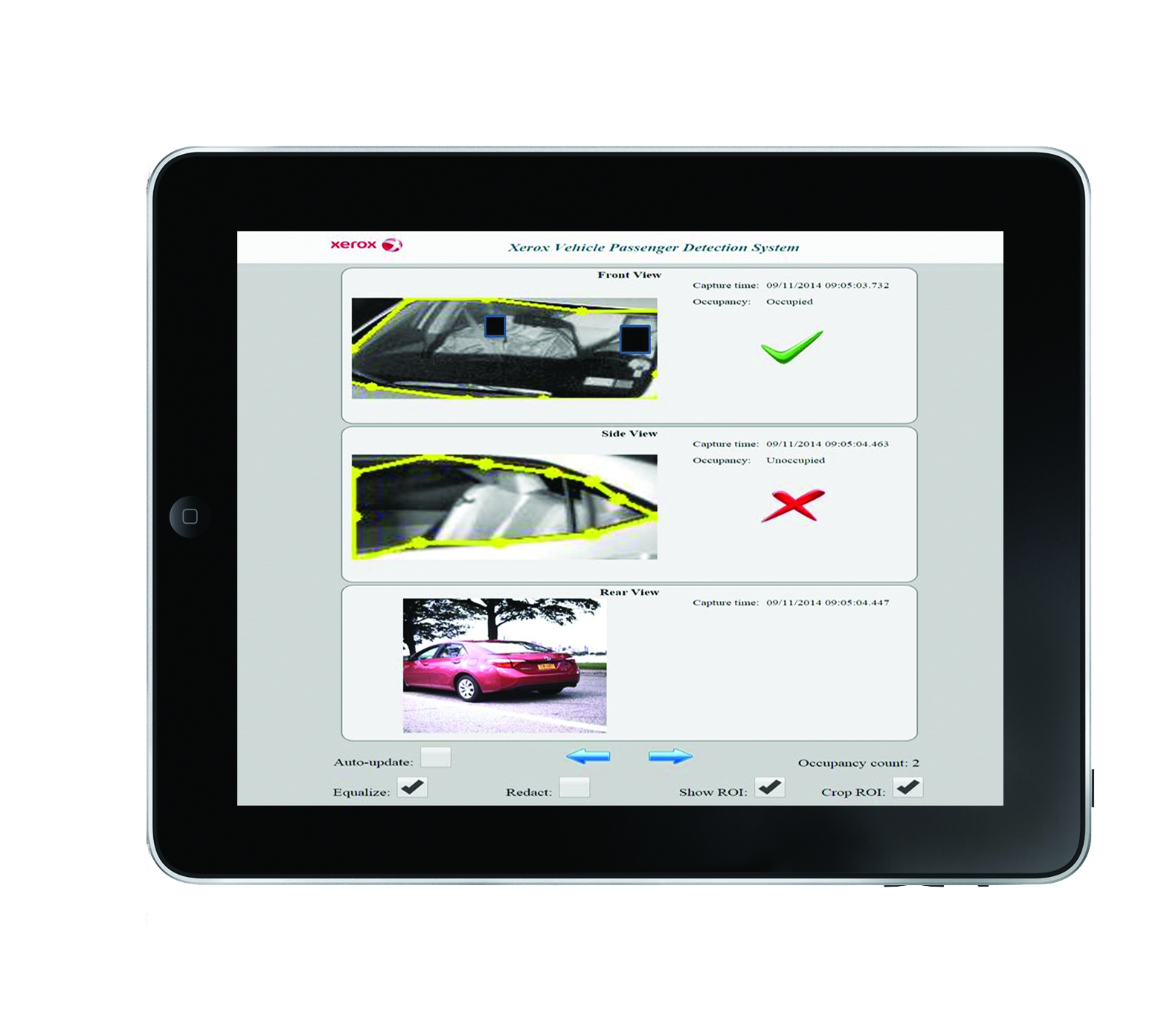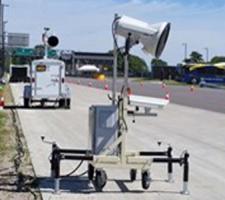
Xerox’s Passenger Detection System has been trialled in California and compared with the state’s team of human counters giving some interesting results, as Colin Sowman discovers.
Like others adopting high-occupancy and high-occupancy vehicle (HOV) lanes for congestion management, Caltrans has faced challenges with compliance in what has been effectively an ‘honour system’ with drivers trusted to set their tags correctly or comply with the multi-passenger requirement. The authority has an experienced team of roadside observers but with vehicle volumes toping 1,000/hr, that’s more than can be accurately monitored by the human eye and was therefore an ideal candidate to test Xerox’s Vehicle Passenger Detection System (XVPDS). This system uses advanced video analytics and geometric algorithms to detect the number of occupants in moving vehicles.
A test system consisting of two cameras, an illuminator, a trigger and a video image processor were installed on a heavily travelled stretch of northbound I-5. From the outset Caltrans had three objectives: to test the system’s accuracy and performance; to compare the system with its human counters; and to better understand the current violation rate to determine if violators contribute to HOV lane slowdowns.
Once installed, thousands of images of multi-passenger and single-passenger vehicles were fed in to the system to ‘train’ the computer to accurately recognise these scenarios. This training process, known as Computer Machine Vision (see box) took about two weeks and data was collected to create an occupancy model, which was then installed on the roadside system. Once the model was created and installed, the system collected test data at peak periods on three consecutive days – three hours in the morning and three hours in the evening. The agency’s roadside observers monitored the roads over the same period. This test data was used to compare the automated output of the model to the results produced by the roadside observers.
In terms of vehicle identification the system can be connected to a license plate recognition system (which Xerox also offers).
However the company says many toll agencies also want to match the transponder to the vehicle in order that it can use the switchable tag position (HOV or not HOV) to match against what the VPDS detects.
Trial results
In the Caltrans test period 12,073 vehicles used the HOV lanes with an average vehicle count of 1,774 during the morning peak. In terms of calculating the Single Occupancy Vehicle (SOV) rate, XVPDS achieved a 95% accuracy compared with 35.7% for the roadside observers’ delivered percent accuracy. Figures for the evening peak were an average vehicle count of 2,250 with XVPDS identifying 95.3% of single occupant vehicles compared with the roadside observers’ 35.6%.
Overall XVPDS achieved a 95.94% accuracy rate with missed violators accounting for 2.65% and wrongly identified non-violators accounting for the remaining 1.41%. In operation, the back office system would include an image double-check so any errors would be caught before driver notifications or erroneous toll adjustments occurred.
With comprehensive and highly accurate figures Caltrans was able to calculate the violation rate in the HOT lanes. What the findings revealed was a single occupancy rate of 17.4%. However, low emission vehicles, which can legitimately use the HOV lanes, accounted for 5.75% of the users. This indicates the remaining 11.65% were violators - a significant enough proportion to impact traffic flow. Not surprisingly, the number of violators rose as traffic volumes in the free-use lanes increased.
As the trial system was not fitted with ANPR it was not possible to match violations to individual vehicles as the aim was to test the equipment and not to match vehicles to violators for enforcement purposes. This meant there was no way to determine if there were serial violators although Xerox believes this is likely as the test site was on a commuter route that sees lots of repeat traffic. It says this can be included in future trials and commercial deployments.
That said, the trial has demonstrated the capability and accuracy of the automated system both objectively and subjectively in comparison with one of the best human observation teams in America. According to Xerox, the results even surprised Caltrans’ leaders and the authority plans to use the information to develop a strategy to increase compliance.
Enforcement
By using a two-camera system the first camera can capture an electronic image of the front seats while the second captures the rear seats. These are both analysed to determine the number of people in the vehicle and can be presented to an enforcement officer as an evidence package.
However, during the trial at times there could be several dozen violators in an hour – far more than one officer could handle. Also, the presence of enforcement vehicles and officers can create a safety issue and become a cause of congestion as well.
Where local regulations allow, a second option is to use the same package of information which can be sent to an enforcement officer in the back office and they can issue a citation.
If the violator is registered with the toll authority and had declared the vehicle as HOV-compliant but was found not to qualify for HOV status, the evidence package can be sent to the back office for a toll adjuster to intervene and adjust the toll. In this case no citation would be issued as no violation has been committed but an administrative fee would probably be added.
Both scenarios two and three are preferable as they are more efficient and safer as there is no call on police time and no officers are required to be stopping vehicles and exiting their car on the roadside to issue citations.
Computer Machine Vision
While the base algorithm is already in XVPDS, system learning is required at each installation due to the unique angles and distances at each location. Typically this requires gathering data for one or two days to train the model for the specific installation. Factors to consider are whether to mount the system on the driver’s or passenger’s side of the road, the distance and angle between the front seat camera and the lane and the distance and angle between the rear seat camera and the lane. While the recommendation is to mount the system in a permanent location, such as an HOV entrance point, a mobile unit is available.












